When a large selection of wedding dresses presented in wedding salons does not satisfy, there remains the option of sewing the dress itself or contacting the atelier. In any case, you need to choose the right fabric so that it matches the season, the style of celebration and it was comfortable to be in it, so that it was pleasant to the touch. Each fabric has its own advantages and disadvantages, which must be taken into account when choosing and sewing.
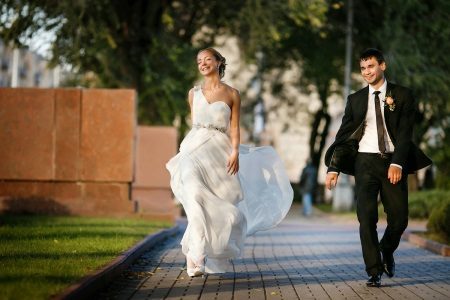
Classification
Conventionally, fabrics for sewing wedding dresses can be divided into types.
By seasons:
- for summer weddings use airy, light fabrics;
- for winter - dense and light, if they are sewn on a "warm" fabric;
By model:
- for intricate models choose form-stable material, elastic and dense with a three-dimensional structure;
- any dress fabric is suitable for a simple cut of a wedding dress.
By type of raw material:
- natural;
- synthetic.
According to the invoice:
- matte;
- brilliant;
- reflective light (e.g. organza, silk, satin);
- structured;
- aerial
- mixed.

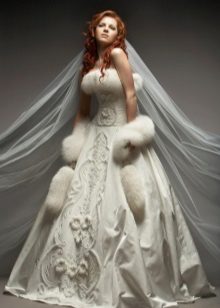
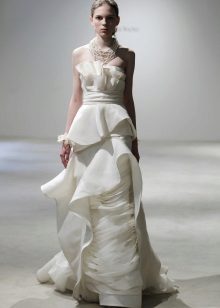
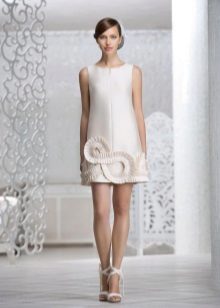
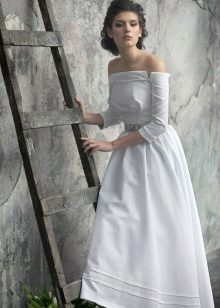
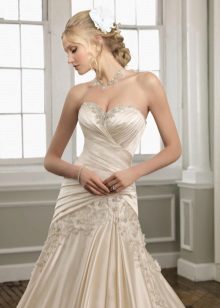
Kinds
Classical fabrics are satin, brocade, chiffon, taffeta, organza, and tulle. Matter with relief patterns and ornaments is very popular.

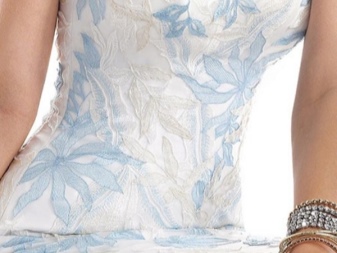
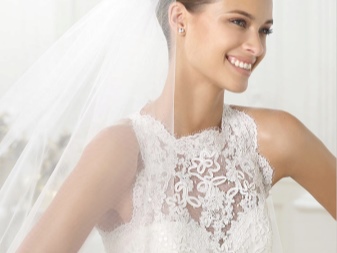
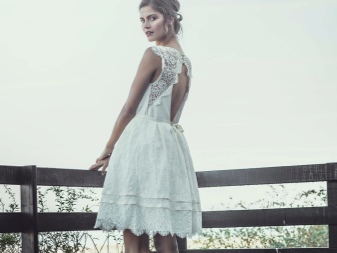
Atlas
The chic regal look of the atlas attracts a lot of attention due to the smooth and mostly shiny surface. It is very well suited for the base of the dress, since its density allows it to withstand decoration with beads, glass beads, crystals, while it does not sag and does not stretch. That is why it occupies a special place in tailoring and is in great demand in comparison with other types of fabrics for wedding dresses.
The atlas is also interesting in that it can be supplemented with various interesting effects, for example, “crumpled” decoration or embroidery. Often in wedding dresses, matte fabrics are used with him, thus dimming his shine.
Use satin for autumn and winter wedding dresses. Also, this fabric is suitable for weddings in palace interiors at any time of the year. The style can be any, very beautifully soft and flowing satin looks on dresses in the Greek style.
There are several types of satin: duchess satin - a very shiny fabric and matte satin - fabric without glitter.
When choosing this luxurious fabric, one of its drawbacks should be kept in mind. The atlas wrinkles very easily, especially with regard to matter made from natural silk fibers. Additionally, he is able to show the shortcomings of the bride’s figure, crumpled into folds in places where this is not necessary at all. Also keep in mind that in the summer it will be hot to be in a satin dress, and a long beautifully draped train is hard to wear. Thus, you need to use the atlas if you have confidence in the perfection of your figure.

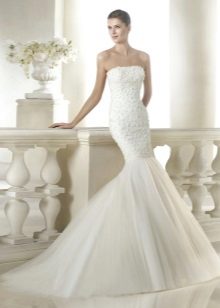
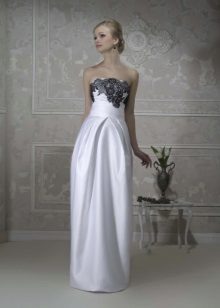

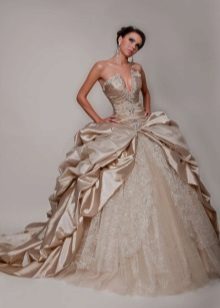
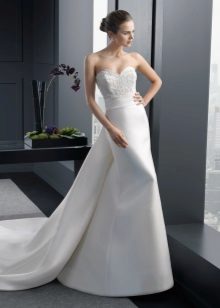
Satin
Satin is somewhat similar to satin, it is also beautiful, durable and practically does not crease. Its surface can be smooth matte or shiny, silky to the touch. Looks gorgeous with embroidery.
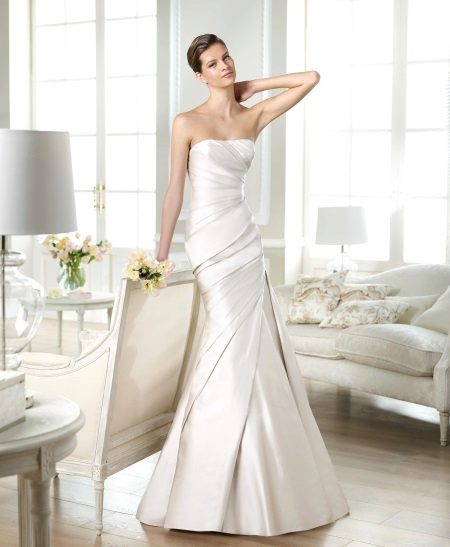
Silk
Silk wedding dresses are considered the most expensive. Brides look chic, elegant and, of course, feminine, especially in models of tight-fitting styles, an example is a mermaid and A-siluet. The main thing is to choose a style. Fit should be perfect.
This fabric is very pleasant to the touch, which will suit girls with delicate skin.
It is worth noting such disadvantages of chiffon:
- Like many natural fabrics, smooth and lightweight silk will wrinkle. It is better to choose a fitting style.
- The next disadvantage is the difficulty of working with the fabric. He can slide, move out, therefore, entrusting the tailoring of a wedding dress from silk follows a high-class master.
- Also, when choosing silk for a formal dress, keep in mind that the shiny surface is slightly fuller. This is more noticeable in wedding photos.
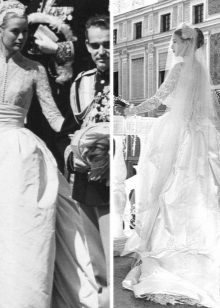
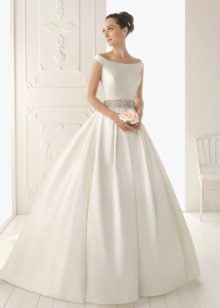

Organza
Another name for this fabric is "gas." Organza is a very thin, transparent, light and airy matter, slightly stiff to the touch, but effectively shimmering in the sun. She impresses with the play of flowers in draperies, pleats and creases.
There is a matte organza. It is considered a noble matter and its cost is somewhat more expensive. Such a fabric is able to make the wedding dress more magnificent, light and elegant. And due to its rigidity, it keeps its shape well, therefore it is successfully used in decoration. Namely, interesting frills, cute ruffles, shuttlecocks, high collars, and magnificent sleeves are sewed from it. You can sew an underskirt with organza.
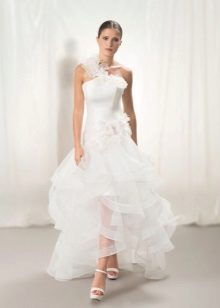
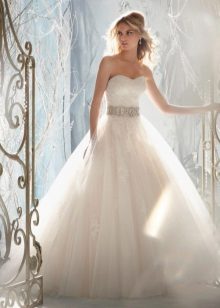
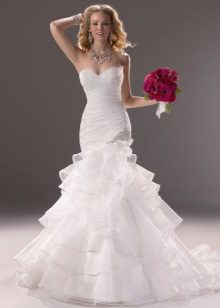
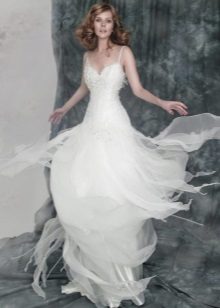
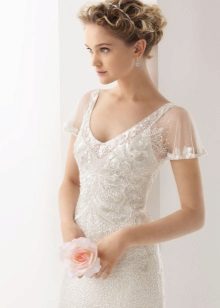

Chiffon
Another light and translucent fabric makes the wedding dress romantic and airy. Chiffon is lighter than organza, so it drapes very well, which is why dresses are called flowing. Chiffon is used mainly for dress decoration (complex drapery, full skirt, sleeves, bodice trim, veil) and almost never, as the basis of the dress.
Chiffon wedding dresses in Empire style are convenient for celebrations in nature or abroad (the fabric is packed compactly, which is convenient for weddings not at home). In the summer it will not be hot, but on the contrary - easy and comfortable.
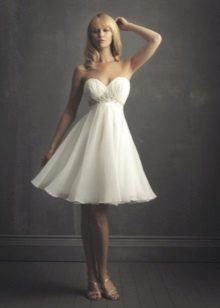
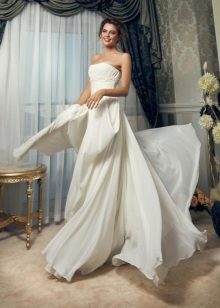
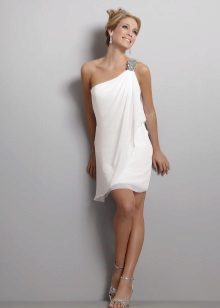
Fatin
Tulle, "English mesh" are the second name of tulle, in which its essence is displayed - mesh. WITHmaternity outfits, or rather volumetric and light skirts, sew from soft and thin material. Of course, they also sew a veil from it.
Fatin is easy to work, its edges do not need to be processed, which allows you to create flying models of wedding dresses. From this fabric is so loved by tailors and fashion designers, such as Vera Wong. Every season she produces amazing models of dresses from such a simple fabric.

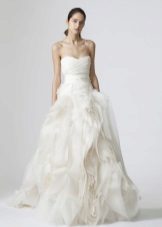
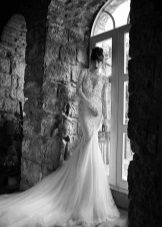
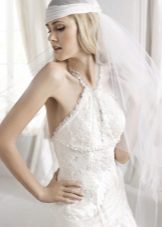
Lace
Delicate and beautiful material, made by machine or manual method, is again at the peak of popularity. Wedding dresses of any length, style, completely sewn from lace or emphasize only one part of the body (arms, chest, waist, legs), attract special attention. The image of the bride becomes romantic, feminine and innocent, airy and light, truly luxurious.
The color of the lace is varied, but white and cream are more in demand for a wedding dress.
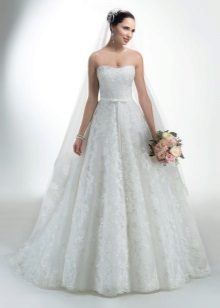
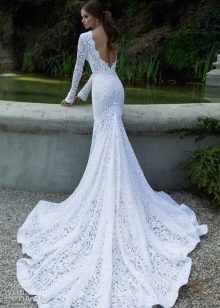
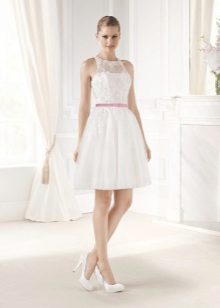
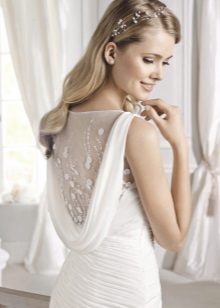
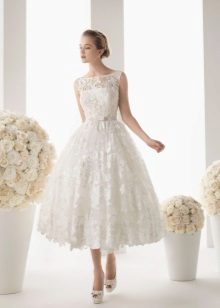
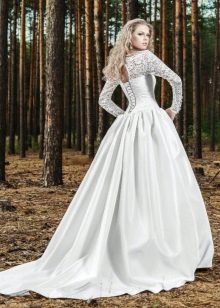
Crepe
Crepe is natural and artificial, light and heavy. Any style of wedding dress can be sewn from it, since it refers to non-creasing fabrics. A crepe with a smooth surface decorated with lace looks better.
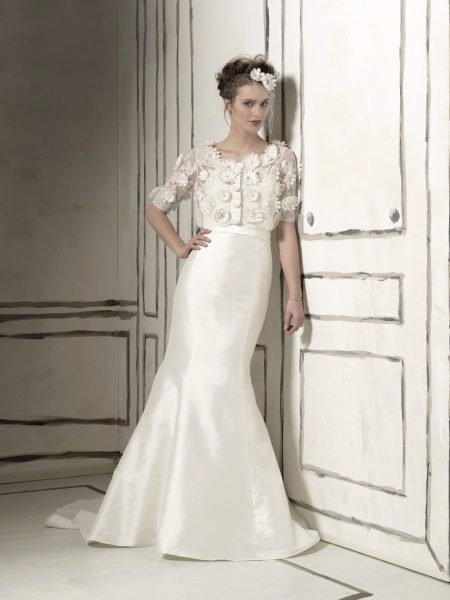
Brocade
Luxurious and royal matter of gold or silver shades is the best suited for winter wedding dresses. Brocade is quite dense and heavy, contains silk threads.
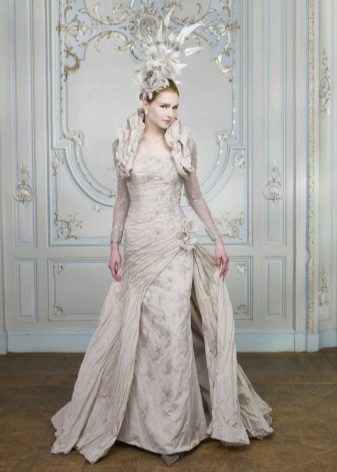
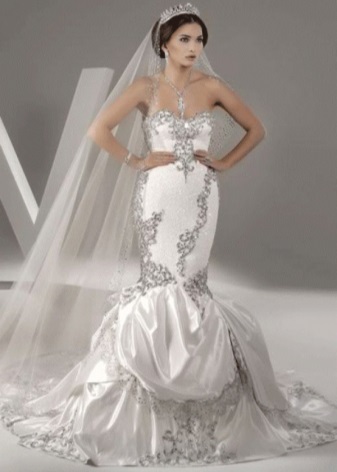
Taffeta
Elegant and solemn, taffeta is much lighter than satin. Its non-creasing surface, also shiny and slightly harsh, is best suited for dresses with ruffles. Cotton or silk taffeta is distinguished by rustling when moving.
From it you can sew a dress for a wedding of any season. Taffeta and brocade are great for ball gown wedding dresses with corset, A-siluet models, as these fabrics are winter, dense and heavy. The taffeta skirt will not lose shape. It's all about processing synthetic fabric.
Decorate the wedding outfit with lace, beads and glass beads, tulle or silk mesh.

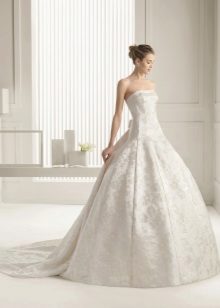

Lining fabric
Monofilament is mainly used for lining, for example, satin, twill, chintz, silk, cotton fabrics.
The choice of lining depends on the season (hot or cold), as resistance to external influences is different. For example, matter from viscose and acetate-viscose fibers is very hygroscopic. It is great for summer dresses, which can not be said about polyester. You should also consider some of the nuances of each fabric. So, sweat may remain on acetate and silk linings.
It is necessary to choose a lining fabric thinner than the main one, and with a smooth surface. It will slide easily in contact with other materials, while fabrics with embossed texture will adhere on the contrary.
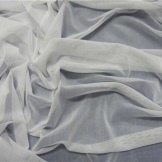
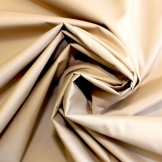
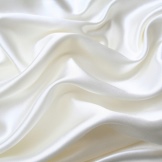
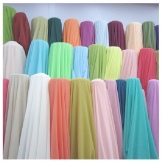
Features of working with fabrics
Transparent
- Seams, tucks and stitches should be as small as possible.
- Iron transparent materials should be slightly touching.
- For less gliding the fabric before cutting, the table needs to be covered with a light blanket. Scissors should be used sharp.
- Chiffon, georgette and crepe need to be cut in one layer. The pattern is done complete. It is pinned to the fabric and it is advisable to remove it only after sewing with the fabric after cutting.
- Threads for stitching are taken thin.
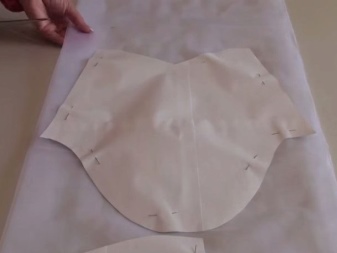
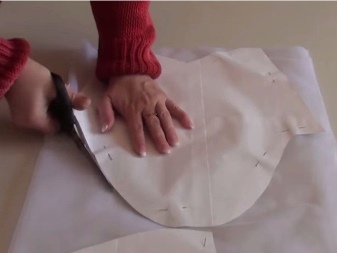
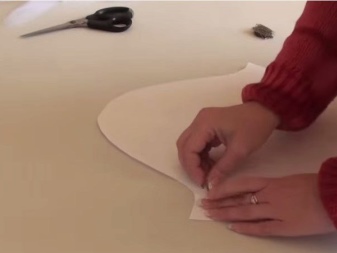
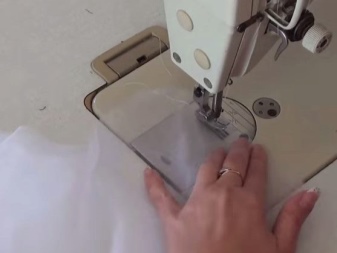
Lacy
- The number of seams should be the smallest. But for a tight-fitting dress model, you can use adjusting seams if the lace fabric is dense and with a large convex pattern.
- Patterns during cutting should be complete.
- Details on the pattern are arranged in such a way as to maximize the use of lace motifs. Rapport elements are placed symmetrically on the back and front. At the seams, they should be combined.
- Individual elements of lace or a strip of curly edge can be cut out (cut off) and used as applications.
- Before cutting lace fabric, it is necessary to make an exact fit of the dress according to the figure. First, the details from the lining are grinded and adjusted, and already after the possible changes are transferred to the lace fabric. If the lining is not supposed, make a template from cheap fabric. You can use the method of tattoos. See the video for an example.
Please note the following:
- Details are sewn in a narrow seam. Lace with embroidery - laid on with a closed cut.
- When ironing the seams, a thick soft blanket is placed under the fabric, and an iron is placed on top.
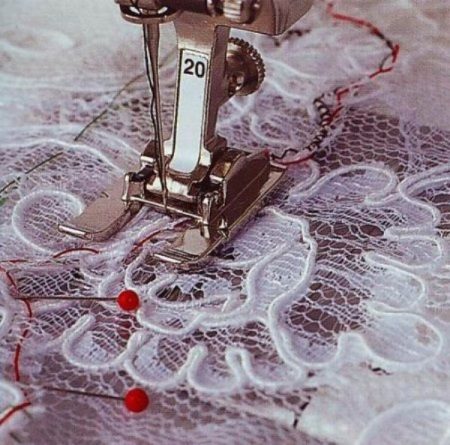
And finally, an interesting video about the basic rules for cutting various types of fabric.
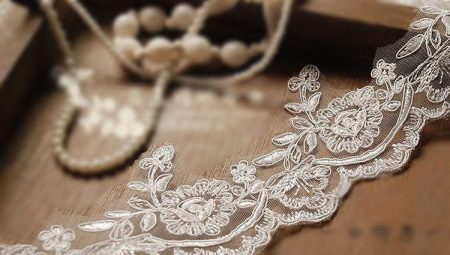











Lace wedding dresses are my favorite! I also like dresses made of organza, they are airy and at the same time mysteriously translucent.